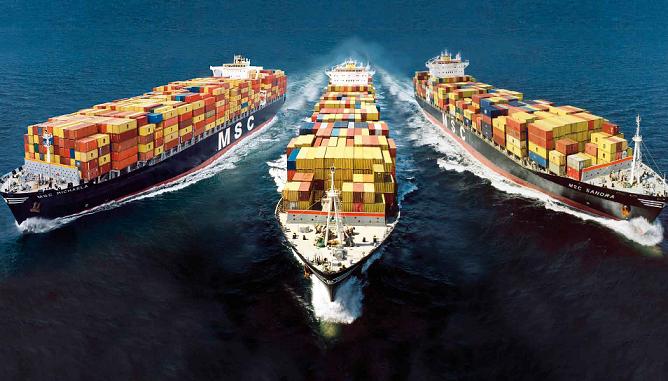Strategic logistics planning is defined as a unified, comprehensive, and integrated planning process to achieve competitive advantage through increased value and customer service, which results in superior customer satisfaction, by anticipating future demand for logistics services and managing the resources of the entire supply chain. Strategic logistics planning carried out within the framework of the overall corporate goals and plan. It therefore requires an in-depth understanding as to how the different elements and logistics activities relate in terms of trade-offs and the total cost to the organisation. Logistics can therefore best formulate its own strategy only by understanding the overall corporate strategy. Formulating the Strategic Logistics Plan The development of the strategic logistics plan is dependent on the marketing, manufacturing, finance/accounting and logistics functional areas. Marketing provides information about product or service offerings, pricing and promotion for each channel. This includes planned sales volume per month, type of customer, and Continue reading
Logistics Management
Concept of Shipping Conferences in Logistics
The conferences are association of companies, resembling an ordinary cartel or trust, formed to control supply and prices and to limit entry into the trade. The Royal Commission of 1909 defined Shipping ring or conference as ‘a combination, more or less close of shipping companies formed for the purpose of regulating or restricting competition in the carrying trade on a given trade route or routes’. Shipping Conferences are formed only in a line trade and not in the tramp service, because the former is a more stable and regular organisation. Since the conferences are made for particular routes only, a shipping company may join many conferences on different routes. Likewise, the shipping companies may not join conference of a particular route and carry on independent business. The organisation of conferences varies. It may be completely formal or informal. A conference may have liners of various nationalities as its members and Continue reading
Introduction to Supply Chain Management (SCM)
Definitions of Supply Chain Management Supply chain management (SCM) is the management of a network of interconnected businesses involved in the ultimate provision of product and service packages required by end customers (Harland, 1996). Supply Chain Management spans all movement and storage of raw materials, work-in-process inventory, and finished goods from point of origin to point of consumption (supply chain). Another definition is provided by the APICS (The Association for Operations Management) Dictionary when it defines Supply Chain Management as the “design, planning, execution, control, and monitoring of supply chain activities with the objective of creating net value, building a competitive infrastructure, leveraging worldwide logistics, synchronizing supply with demand, and measuring performance globally.” Supply Chain Management (SCM) as defined by the Council of Supply Chain Management Professionals (CSCMP): “Supply Chain Management encompasses the planning and management of all activities involved in sourcing and procurement, conversion, and all logistics management activities. Continue reading
Functions of Logistics
What is Logistics? The service of providing the right resources at the right time and right place for efficient and effective performance of a goal-oriented activity, including consumption is called as logistics. In simple words, “Logistics is the process of anticipating customer needs and wants; acquiring the capital, materials, people, technologies, and information necessary to meet those needs and wants; optimizing the goods- or service-producing network to fulfill customer requests; and utilizing the network to fulfill customer requests in timely way.” Logistics is the support element of the enterprise. It helps in managing the movement and storage of: Material into the enterprise. Goods in the enterprise. Finished goods from the enterprise. Its focus should be upon its inbound logistics system (movement of material within the organization) and its outbound logistics system (meeting the requirements of its customers). The definition above accurately defines the logistics process but is too restrictive under the Continue reading
Effective Logistics and Competitive Advantage
Effective logistics management can provide a major source of competitive advantage. The bases for successes in the marketplace are numerous, but a simple model has been based around the three C’s — Customer, Company & Competitor. The source of competitive advantage is found firstly in the ability of the organization to differentiate itself, in the eyes of the customer, from its competition and secondly by operating at a lower cost and hence at greater profit. Seeking a sustainable competitive advantage has become the concern of every manager who realizes the realities of the marketplace. It is no longer acceptable to assume that the goods will sell themselves. An elemental, commercial success is derived either form a cost advantage or a value advantage or, ideally both. The greater the profitability of the company the lesser is the cost of production. Also a value advantage gives the product an advantage over the Continue reading
Warehousing Function of Logistics
A warehouse is a location with adequate facilities where volume shipments are received from a production center, broken down, resembled into combinations representing a particular order or orders and shipped to the customer’s location or locations. The rationale for establishing a warehouse in a distribution network is the creation of a differential advantage for the firm. This advantage accrues from achieving a lower overall distribution cost and/or obtaining service advantage in a market area. The concept of a distribution warehouse or a distribution center is vastly different from the earlier concept of a godown for storage. The need of that system is sue to Ensuring protection against delays and uncertainties in transportation arising from a variety of factors. Eliminating lack of sophistication in production control and consequent uncertainties in the availability of product at the desired time and place. Providing for adjustment between the time of production and the time Continue reading

